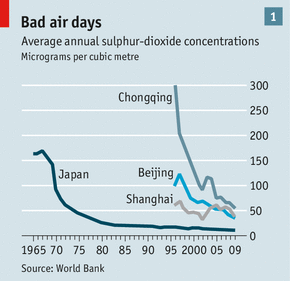Here’s Paul Krugman:
But in the world we’ve been living in this past quarter-century or more, inflation expectations haven’t moved much, and nominal interest rates have, in practice, been a pretty good guide to the stance of monetary policy.”
Throughout the post, Krugman seems to imply that nominal interest rates are a good guide to the stance of monetary policy as long as inflation expectations are fairly stable. And also that inflation expectations have been fairly stable in recent decades. This would seem to lead to the absurd conclusion that monetary policy must have been very expansionary in 2008 because nominal interest rates fell sharply!
Now let’s first get one thing out of the way. Words mean what the public thinks they mean. Most people agree with Krugman that low rates mean easy money, so in a sense that is what low rates mean. There is no generally accepted definition of what we mean by the “stance” of monetary policy. So I won’t try to argue that Krugman has made some sort of simple mistake here, but rather that nominal rates are just about the most useless definition of monetary policy one can imagine. Here are some possible indicators of the stance of monetary policy:
1. Nominal interest rates
2. Real interest rates
3. The monetary base
4. M2
5. The trade-weighted exchange rate
6. Commodity price indices.
7. Gold prices
8. The CPI
9. TIPS spreads
10. Expected NGDP growth.
Obviously I favor number 10, but let’s talk about one I don’t favor, the monetary base. During the decade prior to the subprime crisis the base had been trending upward at about 5% per year. Then between August 2007 and May 2008 the base leveled off. This sharp slowdown in base growth was associated with:
1. Slower NGDP growth
2. Sharply falling nominal (and real) interest rates
The NGDP figures suggest that money was getting tighter, as the Fed was stopping the printing presses. The interest rates were signaling (according to Krugman) that money was getting easier. Which definition is the most useful in this case? I think it’s pretty obvious.
Now let me be clear on one point. THE MONETARY BASE IS ALSO A LOUSY INDICATOR OF THE STANCE OF MONETARY POLICY. Over the past 5 years the monetary base has been just as bad as nominal interest rates.
I believe that if Paul Krugman gave this issue some thought he’d have to end up agreeing with me. Some might argue that NGDP doesn’t measure the tightness of monetary policy, but rather the results. They say we need to look at the input into monetary policy, and that’s nominal interest rates. But why nominal interest rates? Those are just one of many variables that the Fed influences in the short run. Policy also influences gold prices, exchange rates, commodity prices, TIPS spreads, M2, etc., etc. Indeed if we want the most direct policy tool of all, it would be the base. The Fed uses changes in the base to target all the other variables, including the fed funds rate.
No, if we look for Krugman’s hidden assumptions here we need to ask why he thinks nominal rates are not as good an indicator as real rates. Think about it; nominal rates are easier for the Fed to target than real rates. And I think the answer is clear. Whether Krugman realizes it or not he must be making some assumptions along the following lines. “If we used nominal rates when inflation is unstable that would lead to the absurd conclusion that money was really tight during the German hyperinflation.” If I’m right, then Krugman is using the macroeconomic outcome to infer something about the reliability of nominal rates as a monetary policy indicator.
So that’s probably why Krugman ends up with real rates being superior when inflation is unstable (and of course they are identical when inflation expectations are stable.) But here’s the problem, inflation isn’t the only thing that distorts interest rates, real growth is also very important. Thus a tight money policy can lead to expectations of recession, and this can depress even real interest rates. This happened in the 1930s, and it’s happened again since 2008. Both Krugman and I think real growth plus inflation is a better Fed target that inflation alone. So it would be really useful to have a sense of whether our measure of “easy money” is consistent with what we think monetary policy should be doing to NGDP. If a so-called easy money policy leads to much slower NGDP growth, then there is something very wrong with our monetary policy indicator, just as there would be if “tight money” led to hyperinflation.
Remember, there are at least 10 possible indicators; it’s not just NGDP and nominal rates. Thus we need to be pragmatists and pick the most useful indicator. You can’t just announce nominal rates are the right indicator among those 10, you must justify your choice. Ben Bernanke was being very pragmatic back in 2003 when he rejected both money and interest rates, and suggested more useful indicators of the stance of monetary policy:
The imperfect reliability of money growth as an indicator of monetary policy is unfortunate, because we don’t really have anything satisfactory to replace it. As emphasized by Friedman . . . nominal interest rates are not good indicators of the stance of policy . . . The real short-term interest rate . . . is also imperfect . . . Ultimately, it appears, one can check to see if an economy has a stable monetary background only by looking at macroeconomic indicators such as nominal GDP growth and inflation.
Yup.
Ultimately it makes no sense to talk about easy and tight money, only money that is too easy or too tight to hit the policy objective. I’m begging my colleagues to adopt a more sensible terminology so that we can stop speaking to each other using different languages.
PS. Starting next week I will cut back on blogging for some travel.
HT: Marcus Nunes



